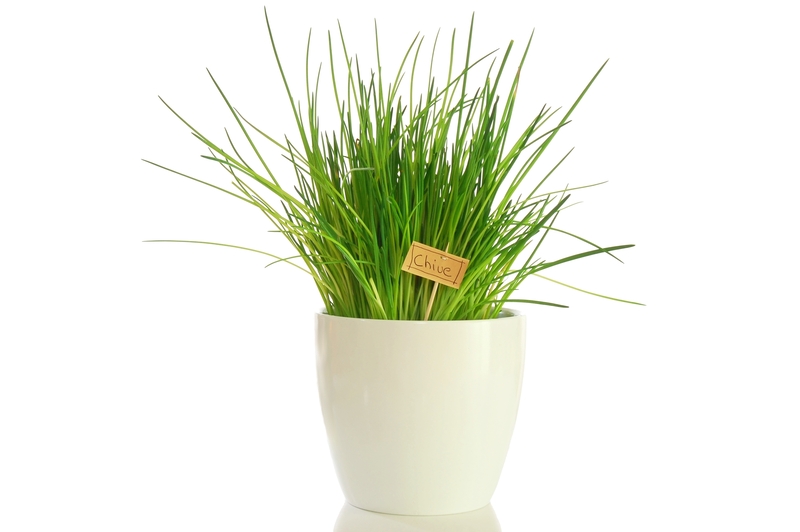Elevate Your Gardening Game with 3 Weed Control Tips
Posted on 28/05/2025
Elevate Your Gardening Game with 3 Weed Control Tips
Ready to transform your garden into a vibrant, weed-free oasis? No matter your experience level, weed management is essential to maintaining a healthy, stunning landscape. In this comprehensive guide, discover three powerful weed control tips that will elevate your gardening game, boost plant productivity, and simplify your outdoor routine.
The Importance of Effective Weed Management
Weeds are more than just unsightly plants; they compete with your desirable flowers and crops for vital nutrients, water, and sunlight. If left unchecked, weeds can choke out your prized perennials, reduce vegetable yields, and diminish your lawn's beauty. That's why weed prevention and control are crucial components of successful gardening. Below, you'll find actionable advice to address this common gardening challenge once and for all.

Tip 1: Master Mulching for Natural Weed Suppression
One of the most effective and eco-friendly weed control techniques is mulching. Mulch serves as a physical barrier, blocking sunlight and preventing weed seeds from sprouting. But mulching is more than just an obstacle--done correctly, it also regulates soil temperature, conserves moisture, and fosters healthy microorganisms!
Choosing the Right Mulch Material
Tip: Layer mulch 2 to 4 inches thick, but avoid piling it against plant stems to prevent rot.
How to Apply Mulch for Maximum Weed Control
- Start with a weed-free bed: Remove existing weeds before mulching to prevent them from regrowing under the cover.
- Lay down mulch evenly, using the recommended thickness. For intractable weeds, consider a double layer--first, a biodegradable newspaper or cardboard layer, then top with organic or inorganic mulch.
- Renew mulch annually or as needed--organic mulches decompose and thin over time. Keep a garden rake handy for easy touch-ups!
Pro Tip: Many professional gardeners use a combination of materials in high-traffic or persistent weed areas. For instance, placing landscaping fabric beneath wood chips can offer the best of both worlds.
Tip 2: Harness the Power of Proper Plant Spacing and Cover Crops
Did you know that thoughtful garden design naturally deters weeds? The way you plant and what you grow can significantly curb weed growth--even before you pick up a trowel or spray bottle.
Dense Planting for Fewer Weeds
- Fill garden beds with lush, healthy plants: When desirable plants shade the soil, weed seeds struggle to germinate due to lack of light.
- Staggered planting: Staggered rows and intercropping (growing fast vs. slow growers together) ensure few bare patches, further stifling weeds.
- Clover lawns & ground covers: Replace turf or bare soil with ground covers (like creeping thyme or clover) for a weed-resistant lawn alternative.
Cover Crops: The Gardener's Secret Weapon
Cover crops--also known as green manure--are fast-growing plants sown to protect and enrich the soil. Planted between growing seasons, they compete with weeds and add nutrients as they decompose.
- Oats, buckwheat, vetch or winter rye: These are excellent at outcompeting weeds in fallow beds.
- Pollinator-friendly choices: Consider crimson clover or phacelia for added biodiversity and beauty.
Turn cover crops into the soil before they flower--this stops reseeding and delivers nutrients right where you want them!
Optimizing Plant Placement and Timing
- Plan for every inch: When starting a new garden bed, consult a planting chart to maximize each square foot and block sunlight from weed invaders.
- Succession planting: As soon as one crop finishes, replant to ensure minimal bare soil time and less opportunity for weeds to settle in.
Tip 3: Weed Smarter, Not Harder--Manual and Targeted Methods
Sometimes, the best weed control strategies are hands-on. By learning when, where, and how to weed, you'll save effort and reduce weed populations without resorting to harsh chemicals.
Hand-Weeding Techniques for Maximum Success
- Pull when soil is moist: After rain or watering, roots come out more easily. Always remove the whole root system (especially for perennial weeds) to prevent regrowth.
- Choose the right tools: A sharp hoe, dandelion fork, or hand weeder can help sever stubborn roots and extract weeds from tight spaces.
- Weed early and often: Young weeds are weaker and haven't yet set seed. A weekly walk-through helps catch problems before they become overwhelming.
Cutting, Scalding, and Smothering: Less Conventional Methods
- Flame weeding: Propane torches zap weed seedlings, excellent for paths and cracks (never use near mulch or dry plants).
- Boiling water: Pour over clusters of weeds in paved or graveled areas for a chemical-free kill.
- Smother with tarps or cardboard: For new garden beds, sheet mulching suppresses both weeds and grass, prepping the site for future planting (also known as "lasagna gardening")!
Spot Treatments and Organic Herbicides
- Vinegar or citrus oil: Use with care--natural herbicides may damage nearby plants, so apply directly to leaf surfaces of weeds only.
- Corn gluten meal: This acts as a pre-emergent herbicide, preventing certain weed seeds from germinating without harming established plants.
Note: Even organic options should be tested in a small area before widespread use!
Bonus Section: Avoiding Common Mistakes in Weed Management
- Letting weeds go to seed: One dandelion can produce thousands of seeds--don't wait to remove flowering weeds.
- Ignoring edges and borders: Keep fences and pathways clear; these areas often serve as seed banks for next year's invasion.
- Over-tilling: Deep tilling brings buried weed seeds to the surface, triggering new growth. Try no-till practices when possible.
- Underusing mulch: Thin or patchy mulch offers zero weed control--replenish as needed throughout the growing season!
Elevate Your Gardening Routine--Start with These Weed-Control Tips Today!
Effective weed management strategies are essential to elevating your gardening game. By combining mulching for weed suppression, using dense and strategic planting or cover cropping, and employing proactive manual or targeted weeding, you'll minimize invasive plants and maximize healthy, beautiful growth.
- Save time and reduce effort: Fewer weeds means less time pulling, more time enjoying your garden.
- Protect your harvest: Strong, weed-free plants yield more flowers, fruits, and vegetables.
- Enhance your landscape: A tidy, vibrant garden is a point of pride--and a joy to spend time in!
Ready to Take Control?
Start today by assessing your garden's needs, adding mulch where needed, reviewing your planting plans, and making weeding a regular, easy habit. With these three expert tips, you'll not only control unwanted growth but also create a thriving, resilient space that's a pleasure to maintain.

Frequently Asked Questions About Weed Control
Q: What is the most effective weed control method for vegetable gardens?A: A combination of organic mulch to block sunlight, close plant spacing, and regular hand-weeding delivers the best long-term weed management in vegetable beds. Q: Are there any all-natural weed killers?
A: Yes! Boiling water, vinegar, and citrus-based sprays are natural alternatives. However, they may damage surrounding plants, so use them as spot treatments. Q: How often should I reapply mulch for weed suppression?
A: Top up organic mulch every 1-2 years, or as it decomposes/thins. Inspect your beds regularly to ensure consistent coverage. Q: Can I ever completely eliminate weeds?
A: While it's nearly impossible to eradicate every weed, using a thoughtful, layered approach will keep populations manageable, supporting a healthier, more productive garden.
Conclusion: Transform Your Garden with Smart Weed Control
Successful weed management hinges on prevention, consistency, and a proactive mindset. By embracing these three top tips--mulching, dense/cover planting, and intelligent weeding--you'll create a beautiful, abundant garden with fewer headaches and more rewards. Elevate your gardening game today: Your plants, soil, and sense of satisfaction will thank you!

